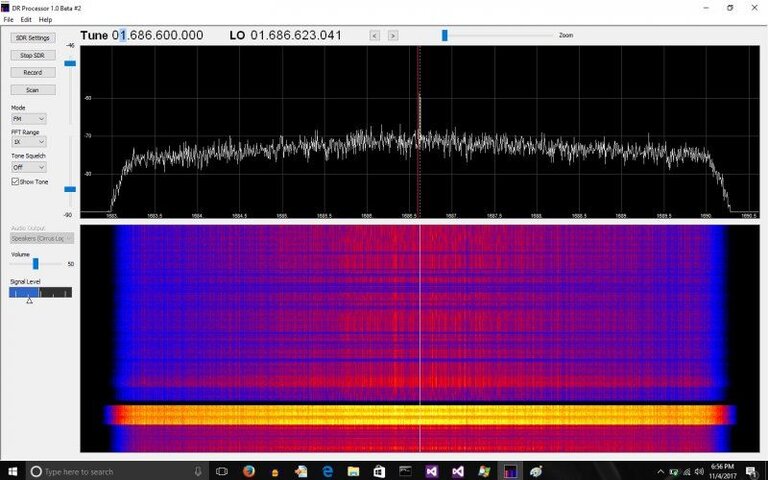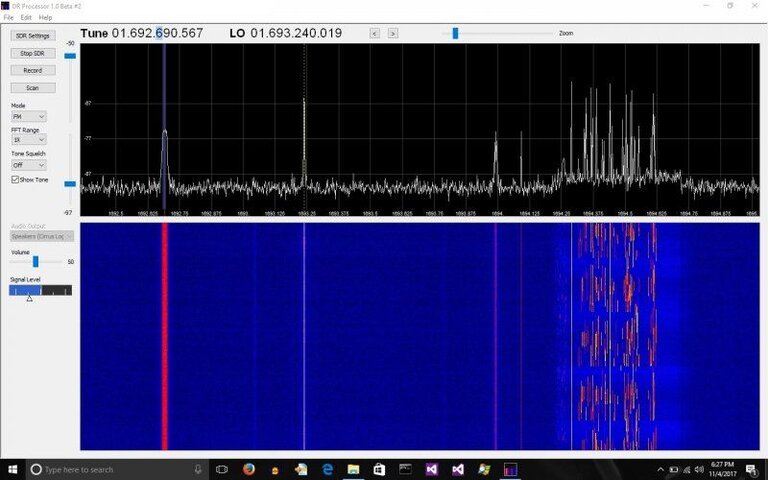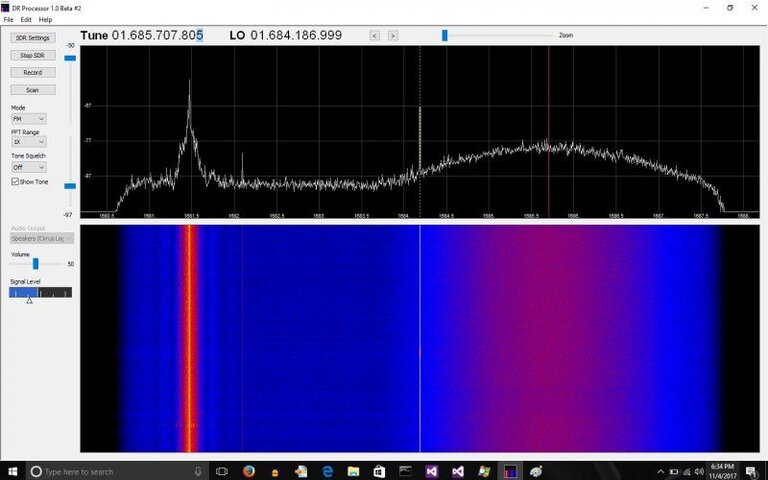That's something that has to do with the receiver. That's why I posted the image of nothing to show what my receiver (SDR) was seeing before it hooked it up to GOES 16.
I would like for you to try to see if you can see GOES West as it would be at 135W. You can use it to tune your system. Mabie try for (16) again.
GOES West spectrum would look just like my analyzer picture of GOES East (13). Post 9
All signals are linear polarized, you should have no problems seeing EMWIN at 1692.7 Mhz even with a circular polarized patch, I use an 8' dish and have a huge EMWIN signal on GOES East, I would try with the Outernet antenna. If you can't see GOES West then something else is wrong.
My suggestion. I do recommend to build a wavegide feed (coffee can feed) though as they seem to work best.
At 121W longitude, I am probably outside of the range of GOES-16, especially with an 8.5' dish and a circular patch antenna tuned for a lower frequency.
I would like for you to try to see if you can see GOES West as it would be at 135W. You can use it to tune your system. Mabie try for (16) again.
GOES West spectrum would look just like my analyzer picture of GOES East (13). Post 9
All signals are linear polarized, you should have no problems seeing EMWIN at 1692.7 Mhz even with a circular polarized patch, I use an 8' dish and have a huge EMWIN signal on GOES East, I would try with the Outernet antenna. If you can't see GOES West then something else is wrong.
My suggestion. I do recommend to build a wavegide feed (coffee can feed) though as they seem to work best.






